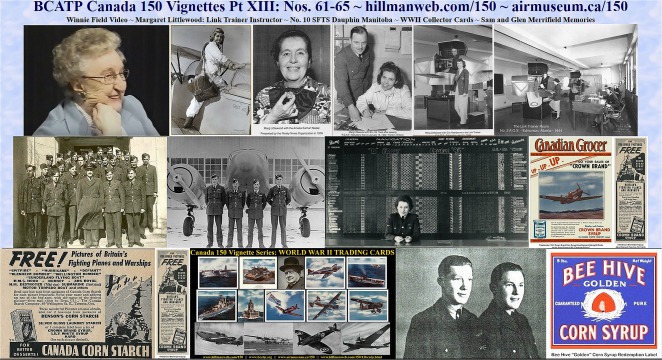We previously saw an example of the Commonwealth
Air Training Plan’s Harry Hayward’s work in our Canada 150 Vignette No.
019 where we used information from his Station Report project to reveal
a special day at No. 7 Bombing and Gunnery School in Paulson Manitoba.
He continues his good work interpreting British Commonwealth Air Training
Plan Station Reports gleaned from microfilmed official Royal Canadian Air
Force reports. Harry is currently working on the reports for No. 10 Service
Flying Training School in Dauphin Manitoba.
We present a portion his work – a couple of months in
1941 which deals with the opening of that school and the subsequent difficulties
connected to the opening -- staffing, the weather and essential base facilities.
Although the writer of the reports is unknown to us, he was definitely
a literate man using some fancy words in a type of report that generally
isn’t flowery and injecting witty remarks which humanizes the situations
he describes. Enjoy Vignette No. 63 – No. 10 SFTS Station Reports – Dauphin
Manitoba.
15-2-41 Officer made shift for breakfast and lunch by
means of a hot plate in the batmen's room. Sewage disposal plant and sewer
system not yet completed. Will probably be end of February before these
services ready for use. Only water available for washing and cooking must
be hauled in tanks. Sanitary "conveniences" (?) of the most primitive outdoor
type.
16-2-41 Several unofficial complaints of chilblains, account
outside "sanitary" conveniences and temperature 22 degrees below zero,
and not conducive to comfort under such circumstances.
20-2-41 Water and sewage systems still not available for
use.
22-2-41 Still no sanitary facilities available. Large
airmen's Mess put into service, and airmen vacated Sergeant's Mess which
was being used temporarily.
23-2-41 Routine normal. Voluntary church parades held
to various denominations. Strong winds and drifting snow. Snow plough out
cleaning airport roads.
24-2-41 Heat turned on in No. 5 hanger and Command H.
Q. notified ready to receive aircraft. Furniture for Officers' Quarters
beginning Three stenographers, grade one, Civil Service, taken on strength.
These are the only available stenogs-Civil Service- available in Dauphin.
Organization of Orderly Room badly hampered by lack of clerks, only two
service clerks posted this unit at this time.
25-2-41 Start made in getting canteen into operation.
27-2-41 One hundred tables and four hundred chairs supplied
by breweries for use in wet canteens, also refrigerators for canteens,
officers' and sergeants messes. Twenty-five second hand commodes, equipped
with fume pipes, arrived - - " a feeble effort to relieve the discomforts
of the medieval backhouses at 30 below zero.
Authority brought back by C. O. to have additional female
orderly room help from non-civil service stenogs available. Choice of experienced
help very limited.
28-2-41 One more Orderly Room clerk reported for duty.
Still no clerks available for Squadron Orderly Room. D. A. P. S. wired
urgently to post at least three experienced N.C.O. clerks.
Feb. 28 Training not yet commenced.
March 1 1941 Water turned on in barrack blocks one to
four inclusive for washing and showers only.
March 2 Canteens-wet and dry- opened for first time at
1600 hours, with a small initial stock. Purchases, as far as possible,
being made from local business firms.
March 7 Eleven women stenographers now taken on strength.
Squadron Orderly Room personnel extremely limited, no N.C.O. clerks available.
Water for washing purposes turned on in the Officers Mess.
March 8 Slight thaw set in bringing thick gumbo mud in
its wake. Crew set to work making scrapers for entrance to buildings.
March 10 Shower baths at last available in the Officers
Quarters. Toilet facilities still of the most primitive type as sewage
disposal plant not yet completed.
March 11 Received 20 additional parachutes, making a total
of 30. Lack of chutes has contributed to delay in getting flying instruction
under way.
March 12 Water turned on in G.I.S.- - for washing purposes
only. Routine normal otherwise, although still a great shortage of General
Duties personnel. Must employ ex-war veterans as messman, batmen and possibly
as hanger G.D's.
March 14 Water turned on in Barrack Blocks Nos. 5,6 and
7. Outside toilets still "the mode". Sanitary engineers arrived to check
on sewage disposal plant. All fervently hope they'll give it an "O.K".
Primitive backhouses very discomforting.
March 17 Services of the fire engine had to be called
in to aid pumps at the sewage disposal plant. Although the plant only handling
waste water from the showers, and practically no sewage, regular pumps
proved inadequate to handle the discharge alone.
March18 Backhouses abandoned and nobody has any regrets.
Toilets in barrack blocks cannot be used yet.
March 19 Three civilians taken on as messmen due to shortage
of G.D's for kitchen help.
March 25 Number of ex-service men taken on as civilian
messmen, thus relieving, to some extent, the serious shortage of General
Duties personnel.
March 27 Thawing and muddy during the day. Additional
civilians-veterans- engaged for duties in kitchens.
March 28 Thawing all day. The mud is terrific,- - ankle
deep and as affectionate as a love-sick sweetheart. Walking is agony, it
clings so. In D.R.O. of this date was the gladsome news that the toilets
in the Barrack Blocks may be used for the first tine Sunday, March 30.
No more outdoor backhouses. It is hoped the sewage disposal plant keeps
on disposing.
March 29 Weather fine and warm. Snow disappearing- - mud
appearing. Runways covered with slush by early afternoon.
March 30 Flaps on five Harvards damaged due to slush on
runways. Repairs delayed due to lack of material. Photographic section
inoperative due to lack of equipment and supplies. Diffusion plate on enlarging
camera broken when received. No films or printing paper received and only
part of chemical ingredients for developers and fixing bath.
April2 C.O’s inspection showed Barrack Block 4 in very
dirty condition and empty beer bottles found in the block. Whole block
confined to camp for 7 days.
April 5 Dauphin Little Theatre Association put on the
first show in the Recreation Hall. Quite successful and enjoyable. About
60 girls from Dauphin came out for the dance which followed. Mud terrible,
and walking in it even more terrible. However, all seemed to enjoy themselves
in spite of the gritty floor.
April 6 It is just one month since flying training started
and already this Unit is 13 days ahead of schedule with course No. 22.
April 7 Caterpillar tractors around this camp have come
to be known as "Tugs", Half their time seems to be spent in towing bogged
trucks out of the deep, gooey mud. "Plugstreet" is the nickname now given
to the road from the Administration Building to the Officers' Mess. Trucks
using this road all day long have churned it into an affectionate morass
that recalls the muddy mess of Flanders. Bogged cars, floundering officers
struggling through knee deep squish, and occasionally sitting down in it,
are typical scenes.
April8 Mud gets thicker and deeper. Walking on the "roads"
becoming a perilous undertaking.
April 10 W & B (Works & Building) Section procured
several carloads of cinders in an effort to make muddy roads passable.
That's about all the roads are at present.
April 11 W & B crews busy trying to keep bottom from
dropping out of camp roads. All truck traffic banned, except for absolute
emergencies. Tractor and stoneboat used for camp hauling.
April 12 All traffic on camp roads stopped except big
tractor hauling stoneboat. Station Photographic Section still inoperative,
No film or paper supplied yet, although specially indented for. Cannot
use enlarging camera because of broken diffusion plate. Replacement asked
for a month ago. Pictures of crash had to be taken with a private camera.
April 13 Roads awful because of mud which is knee deep
in places.
April14 Disappearing snow has revealed piles of debris
all over the camp, left by the builders. Fatigue parties busy all day in
an effort to get things shipshape for tomorrow's official opening ceremony.
Terrific task because of the mud. Nearly impossible to keep buildings clean
for five minutes at a time. Movies shown for the first time in the Recreation
Hall.
April 15 Weather C.A.V.U. Today this station was officially
opened, with appropriate ceremonies, by Air Commodore A.B. Shearer, A.O.C.
No. 2 Training Command. About 2500 residents of Dauphin attended. The A.O.C.
arrived by plane at 1115 hours, accompanied by F/O McLennan, personal aide.
Opening ceremonies commenced at 1430 hours when the A.O.C. cut the ribbon
which opened the path for a Harvard flown by S/L R.E. DuPont in an exhibition
of aerobatics. The A.O.C. told of the development of the Joint Air Training
Plan and the part #10 S.F.T.S. will play. Prior to the opening ceremony
the A.O.C. inspected a guard of R.C.A.F. personnel and a company of the
Dauphin Veterans Guard. Afterwards the civilian visitors were shown over
the station. From 1600 to 1800 hours a number of invited guests were entertained
at tea in the Officers' Mess. In the evening an informal dance was held
in the Officers' Mess. The band of No. 2 T.C. played during the afternoon,
and the orchestral section for the dance in the Mess. Visiting aircraft
were Beechcraft B.M.U. with A.O.C, Boeing with band and Lockheed with the
visiting flight from Trenton. The new fireplace in the Officers' Mess was
used for the first time, the A.O.C. lighting the first fire.
April 23 Shortage of tail wheel tires reported reducing
the number of serviceable aircraft.
April 25 Sun and wind drying up the mud. Compactors and
graders busy on the roads.
May 1/41 Harvard 3025 crashed in a forced landing. Makes
twelfth accident since station opened.
May 4 S/L G. Sellers of No. 11 S.F.T.S., Yorkton, Sask.
landed with 7 other machines at 1330 hours. He informed the C.O. there
had been a collision in mid-air near Lake Audy. Tail Section cut off one
plane which crashed. Other plane landed here with prop and wing damaged.
Search party organized and found wreckage in two sections 2 miles apart.
Pilot of 11 S.F.T.S., dead.
May 6 Weather turned raw and cold. Fires have been out
since April 30 on instructions from Command. Quarters and offices cold
and damp. Even sheets on the beds were damp, but still no warmth in buildings.
Temperature down to 49 degrees at 2030 hours. Several makeshift hot water
bottles cane to light as personnel tried to keep warm in bed.
May 7 Heating units in station buildings turned on again
at 0900 hours after temperature had dropped during the night to 38.5 degrees.
A little more comfortable now that the heat has been turned on again in
the buildings.
May 8 Spring is in the air, and the urge to beautify in
the ascendant. Appears to be keen gardening competition on among hangar
crews and occupants of barrack blocks as to who will have the neatest and
most colorful gardens in their respective areas.
May 10 A civilian employee working on the field, ducked
and fell on an axe he was carrying, cutting a gash in his arm when a Harvard
swerved off runway.
May 12 Weather clear. Flying all day. Six tail wheels
blown out today.
May 13/41 Mr. Tinline and Mr. Good of Brandon Experimental
Farm here to arrange for seeding of the grounds.
May 14 Getting colder again. Overcoats needed in offices
and hot water bottles in bed. Heat shut off and buildings like refrigerators.
Temperature down to 38. Everybody shivering. (Sniffling noses are the order
of the day). Heat turned on again at 0900 hours.
May 16 Four Chesterfield sets for various Messes donated
by T. Eaton Co. Branch at Dauphin. It was decided to purchase others for
the Canteen and Library from Canteen profits. Shortage of tail wheels.
Seems very difficult getting equipment depot to part with them. Six ordered
by LPO from Toronto and delivered from manufacturer in two days Six only
were received from the depot on Demand No. B 57 which demanded 80.
May 17 Wing tips are "getting it in the neck" these days.
Another damaged on Harvard 3773, tried to land too high up.
May 18 Five new Harvards flown in from Winnipeg, No seat
harness or identification lights in then, so cannot be used for either
day or night flying. Some use, however- -at least their tail wheel tires
are being used to make other aircraft serviceable which were short of such
part.
May 23 Two accidents today. Nobody hurt. Must be a lot
of spare horse shoes around, everyone seems to be so lucky. Student pilot
in Harvard 3783, low flying in Fisher River area–46 miles north. Struck
a backhouse in the Stony Creek school grounds with his port wing. Aileron
and 7 feet at outer end of wing torn off. Backhouse disintegrated. Pilot
managed to fly back to the aerodrome minus aileron and half of wing. Made
a perfect landing. Two charges laid against him of low flying and endangering
life, under A.F.A. Sec. 39A (1) (e) and one under A.F.A, Sec. 11.
May 24 Student pilot was killed when his plane, Harvard
2943, spiralled into the ground at 2330 hours while on solo night flying
practice from the relief field. The aircraft hit the ground about two miles
northwest of the field. There was an explosion and the plane burst into
flames. Bolton was killed instantly and the body badly burned. "A" Category
crash. Saturday routine normal otherwise.
May 27 Overcast skies and cold. Short funeral service
held by F/L Littlewood, station chaplain. Six Leading Aircraftsmen acted
as pallbearers and escorted body to the train for shipment to Toronto.
His Honor, R.F. McWilliams, Lieutenant Governor of Manitoba, visited the
Station this afternoon accompanied by prominent local citizens. Toured
Station and were guests at tea in the Officers' Mess.
May 28 Course 22, the first from this school to graduate,
received their wings today. The presentation was made by the Commanding
Officer, Wing Commander A.H. Wilson. The ceremony was held in the Drill
Hall and was attended by friends and relatives of the graduates. As he
pinned the wings on the breasts of the recipients, the C.O. addressed a
few complimentary remarks to each. Afterwards he addressed the class as
a whole. Presentation of wings should really be regarded as the beginning
of their careers as pilots, he said, and exhorted them to keep open minds
and continue to learn. Following the presentation the parade marched past
in column of route, the C.O. taking the salute.
LAC Daniels wired the C.O. from Centerville, Kansas:
"Sir, will arrive a few days late" for course 29. Very nice of Mr. Daniels.
Course 29 reported today for training.
May 30 Pay Parade held for all ranks. Normal routine otherwise.
Clocks turned back one hour new Station time.
June 13 Course 25 Examination List posted. Forty-nine
passed, two failed. Two fatalities in this course. Seven pupils washed
out during the course.
June 16/41 51 New Zealand Trainees reported for Course
31.
June 21 Course 25 graduated and received their wings today.
Group Captain D.W.F. Bonham-Carter made the presentation, addressing a
few words of congratulation to the graduates individually as he pinned
the wings on their breasts. At the conclusion of the ceremony the Group
Captain addressed the class as a whole. He exhorted them to be cautious
and not to take unnecessary risks but not to hesitate to take whatever
risk arose in their line of duty. He wished them Godspeed and good luck.
Thirty-two of the graduates were posted overseas and seventeen to C.F.S.
Trenton for further training as instructors.
June 23 One of the cross beams in Hangar 4 reported cracked.
Shored up.
June 24 The afternoon at which the Court Martial sentence
of a Sgt. Pilot was promulgated. Five squadrons were drawn up in a hollow
square on the parade ground while the sentence was read by F/O J. Sinclair,
station adjutant. The Sgt. was severely reprimanded and awarded $75.00
deductions of pay. Today a carload of lumber for duckboards arrived. Very
ducky. The material was ordered during the gumbo period in the spring for
immediate use. Anyhow, it will be handy next spring to alleviate wallowing
conditions.
June 25 Ice cream dispenser installed in canteen. Pop
sales increasing by leaps and sounds with hot weather. Canteen committee
voted to donate sum equivalent to 1% of gross sales monthly to R.C.A.F.
Benevolent Fund, but reserved right to discontinue the donation at any
future tine. Routine normal.
June 26 Weather C.A.V.U. and hot as the hobs of Hell.
June 27 Pay parade held today.
June 28 NZ student. made three take-offs with flat tail
wheel tire. Came in and announced he couldn't savvy lack of control on
the ground.
July 1, 1941. Dominion Day; everybody working.
July 2 Rainy weather last week, which stopped flying,
led to two cars of gasoline being cancelled today--too much in stock and
on the way. Having difficulty in keeping things running due to lack of
General Duties. Now 132 short of establishment. Records say little hope
of posting any yet. Supply of suitable civilian replacements also diminishing.
Enlisting "Old Sweats" as G.D's one solution. Mosquitos have raised Hell
with comfort at night in Airmen's Barrack Blocks. During the recent hot
spell somebody busted the fly screens to get more air at night. Result
"Skeeters" blitzkrieged the sleepers. Some brainy wag conceived the idea
of a smudge pot. Used the disinfectant footbath, with rags and paper in
the middle of the room. Smoke beat both Skeeters and sleepers. The latter
soon abandoned the Barrack and slept on the grass- -despite even more Skeeters.
July 3, 1941 Shipment of five more cars of gasoline cancelled
because of recent bad weather. Storage tanks full.
July 4 Weather dull and muggy. This Unit's first case
for detention barracks came up today. AC2 under going detention, refused
to appear for detention drill. He was awarded a further 21 days detention
in Fort Osborne jail.
July 6, 1941 Group Capt. Izatt and S/L Gilkison of the
R.N.Z.A.F. arrived and spent the afternoon inspecting R.N.Z.A.F. personnel
in training here. Fifty-Two R.N.Z.A.F. trainees for Course 33 reported
for duty.
July 8 Arrival of reinforcing steel ended delay in construction
of W.&.B. section. Had been held up for three weeks.
July 9, 1941 Two more students washed out as pilots.
July 10 A fire occurred outside heater room of Barrack
No. 2. Apparently started from hot ashes removed from the jacket heater.
Damage estimated at $10.00. Fire department did good work in immediately
quenching it.
July 11 Landscaping of grounds about finished. The job
now is to coax the grass to grow. Seeding was late, resulting in poor germination-
- of pukka grass- -but loads of mustard.
Mr. Brickenden of Department of Health, Ottawa, visited
the school. He complained of odor from sewage disposal plant being carried
off in open ditch. Odor not exactly rose-perfumed, but no provision made
in station plans for costly disposal field.
July 12, 1941 Station and interviewed a number of civilian
employees with a view to their enlistment.
July 14 New course, No. 33, commenced instruction.
July 15 F/O Fisher to Neepawa to survey new school site.
Pay parade held today.
July 16 Canteen staff reported canteen broken into during
the night. Door jimmied. About 10 packages cigarettes and $12.60 cash stolen.
Investigation in progress.
July 17 At last we have received a few more General Duties
personnel, 14 of them. That brings us up to a strength of 89 G.D.s as against
an establishment of 229. Some job stretching 14 new men to meet all the
demands.
July 18 Canteen staff completely changed. Continual shortages
reported; showing up particularly after month-end stocktaking. Clean sweep
of canteen staff may be solution to the problem. Stocktaking carried out
this morning, before new staff took over.
July 19 Weather C.A.V.U. Hotter ‘n Hell. F/L Huff from
Command H.Q. checking on fire hazards. Remarked on shortage of regular
fire crew, but can't do much about it with the huge shortage of General
Duties personnel.
July 21, 1941 The hot devils are dancing on the hobs of
hell again. Blistering heat with promise of later electric storm. Visibility
unlimited. High wind sprang up-and a hot one, regular sirocco - about 1600
hours.
July 22 Weather partly cloudy. Visibility unlimited. At
0105 hours, during night flying exercises, Harvard 3019 had a forced landing.
Pilot unhurt, aircraft damaged- -wings, centre section and flaps; undercarriage
wiped off. Engine conked in taking off when aircraft about 30 feet off
ground. Aircraft narrowly missed boundary marker poles at end of flightway,
tore out fence pole, just cleared surface of No. 10 Highway; wheels torn
off on lip of 10 foot ditch on west side of Highway. Aircraft skidded on
its belly to a stop in a field 50 yards west of Highway, Cause fuel failure
gasoline tap not turned to full "on" position. Ten civilian employees of
W.&.B. section to Winnipeg for enlistment. Word received here they
were being posted elsewhere instead of being returned here. These men have
been employed against position on establishment since construction of station
first started.
July 23 Flying Officer Fisher, W.&.B. officer, contacted
C.W.O., Winnipeg, re confusion regarding enlistment and posting of W. &
B, civilian personnel at this Unit.
July 14 Ten of Works and Buildings civilian staff enlisted
and reported for duty,
July 27 Heavy rain during the night necessitated use of
the fire engine to assist pumps at sewage disposal plant in handling heavy
runoff.
July 28, 1941 T. Eaton representative visited the station
and inspected linoleum laid in the various school buildings.
July 30 Relaying of linoleum in hospital completed by
T. Eaton Co. Routine normal otherwise.
July 31, 1941 Works & Buildings section moved
into their new quarters. W.&.B. personnel busy picking up crashes for
#7 B. & G. School as well as this Unit. Former apparently has no crane
equipment. Maintenance section appears to have solved the problem of grabbing
brake bands on Harvards.
"Finnegan is "off again" for the seventh time. "Finnegan"
is the mythical trumpeter this Unit hopes to get sometime - and hopes to
be able to keep him. This Unit is entitled to two trumpeters. Has only
had one since station opened. D.A.P.S. was asked- -last March- -to post
us a second. D.A.P.S. did so, but cancelled the posting next day. On six
additional occasions the same procedure --posting and immediate cancellation
-- has happened. So, its "off again, on again, gone again, Finnegan". Trumpeters
must be more precious than gold.
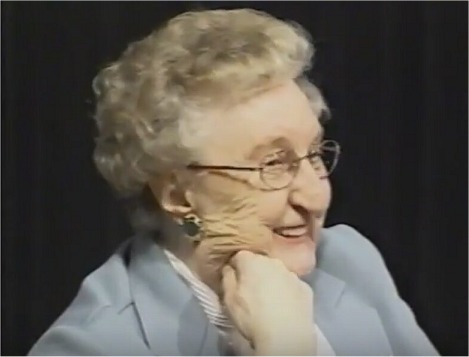 Our
second Commonwealth Air Training Plan Museum video oral history features
Winnifred "Winnie" Field. Winnie was born and raised in London England.
Our
second Commonwealth Air Training Plan Museum video oral history features
Winnifred "Winnie" Field. Winnie was born and raised in London England.
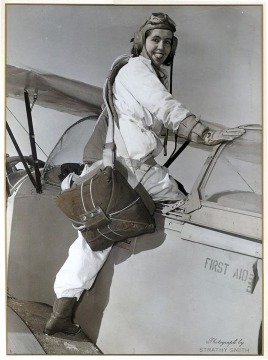
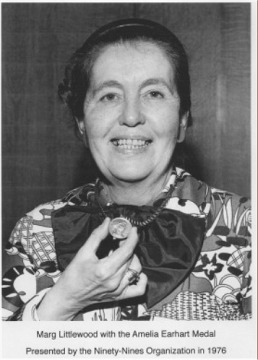
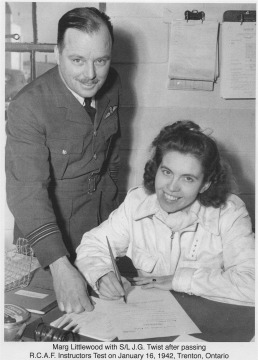
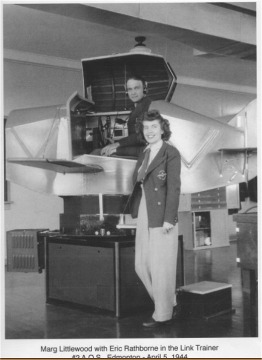
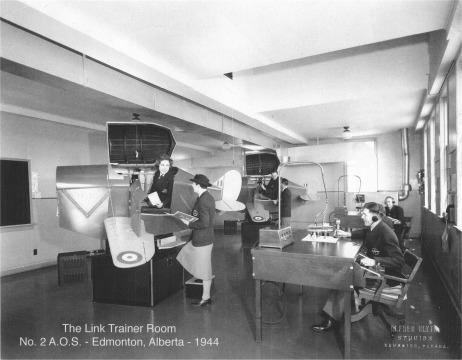
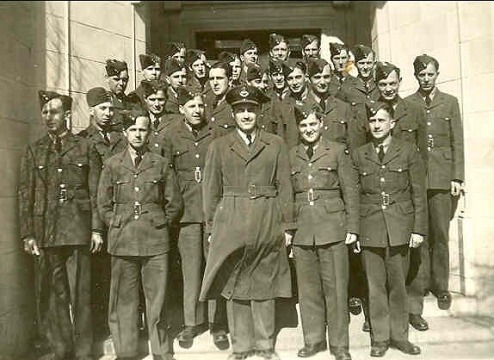
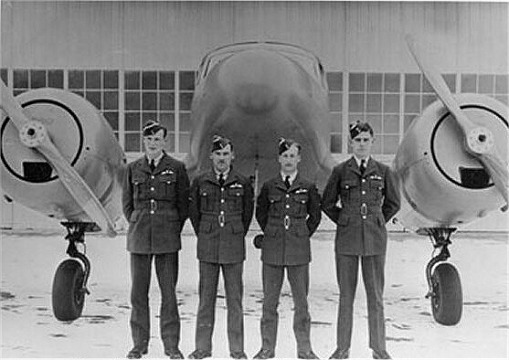
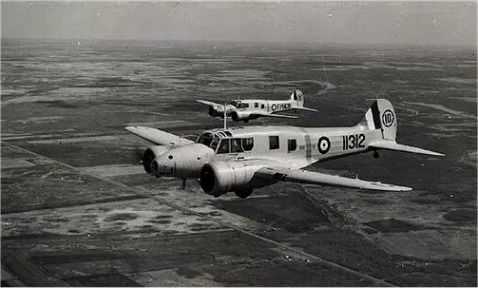
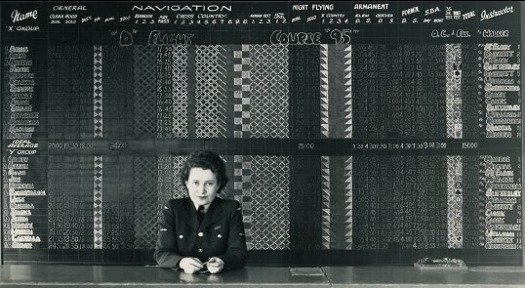
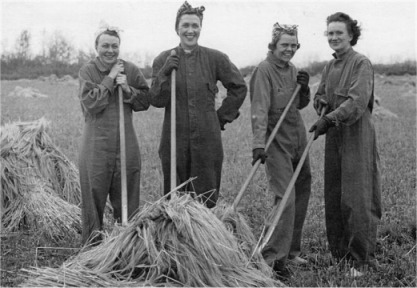

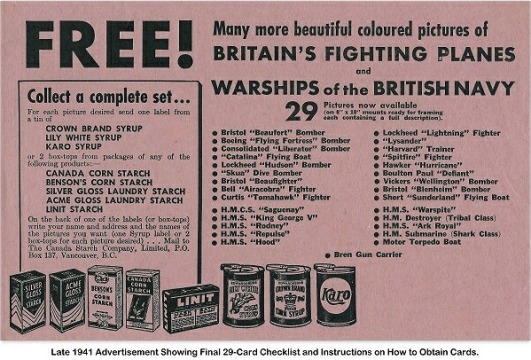
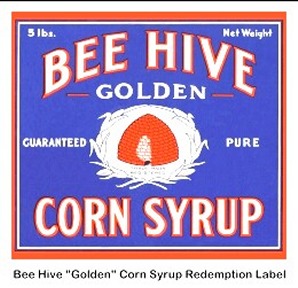 Brilliant
inspiration came first to the St. Lawrence Starch Company in 1934 when
it introduced a set of Bee Hive Syrup pictures promoting National Hockey
League hockey players of the time. The gimmick was in order to obtain a
picture, a customer would have to buy a company product and send in a `proof
of purchase’ along with a letter to obtain the desired picture. This idea
was hugely successful quadrupling the sales of Bee Hive Syrup and making
it the number one seller of syrup in Canada
Brilliant
inspiration came first to the St. Lawrence Starch Company in 1934 when
it introduced a set of Bee Hive Syrup pictures promoting National Hockey
League hockey players of the time. The gimmick was in order to obtain a
picture, a customer would have to buy a company product and send in a `proof
of purchase’ along with a letter to obtain the desired picture. This idea
was hugely successful quadrupling the sales of Bee Hive Syrup and making
it the number one seller of syrup in Canada
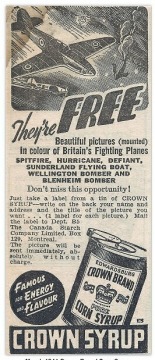
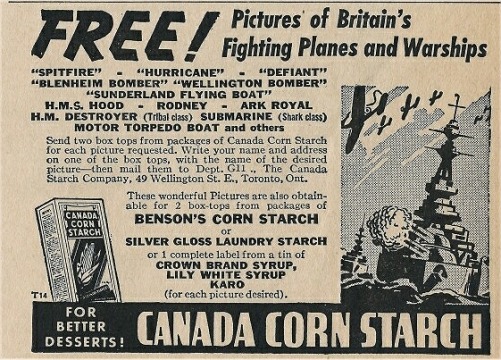
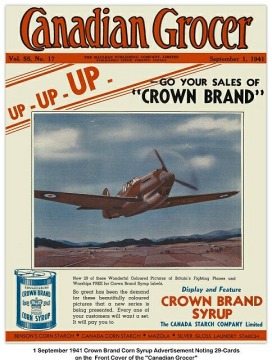
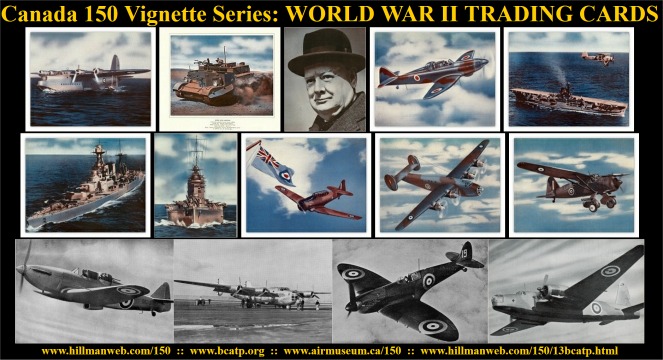
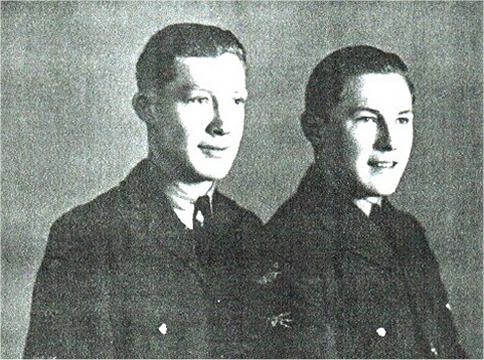 Like
Marham (England), Driffield was a permanent force base but in the early
days of the war it had been badly bombed with the result that there were
no doors on the hangar in which the wireless and electrical sections used
one common room. When we got there, the highest ranking person in the wireless
section was a Corporal named Ford. There was one other RCAF Canadian on
the Squadron and also in the Wireless Section named Tom Cranston. There
were some Canadian aircrew members who were in the RAF, one being Commanding
Officer, Wing Commander Peter Gilchrist. The barrack block in which we
lived had half of it blown away by an earlier bombing. When we arrived,
there was one aircraft but within a day or two another two arrived and
either that night or certainly within a week, the Germans came over one
night and dropped bombs on the airdrome and completely wrecked one of our
planes and badly damaged another thereby reducing our compliment of aircraft
which could fly to one.
Like
Marham (England), Driffield was a permanent force base but in the early
days of the war it had been badly bombed with the result that there were
no doors on the hangar in which the wireless and electrical sections used
one common room. When we got there, the highest ranking person in the wireless
section was a Corporal named Ford. There was one other RCAF Canadian on
the Squadron and also in the Wireless Section named Tom Cranston. There
were some Canadian aircrew members who were in the RAF, one being Commanding
Officer, Wing Commander Peter Gilchrist. The barrack block in which we
lived had half of it blown away by an earlier bombing. When we arrived,
there was one aircraft but within a day or two another two arrived and
either that night or certainly within a week, the Germans came over one
night and dropped bombs on the airdrome and completely wrecked one of our
planes and badly damaged another thereby reducing our compliment of aircraft
which could fly to one.
